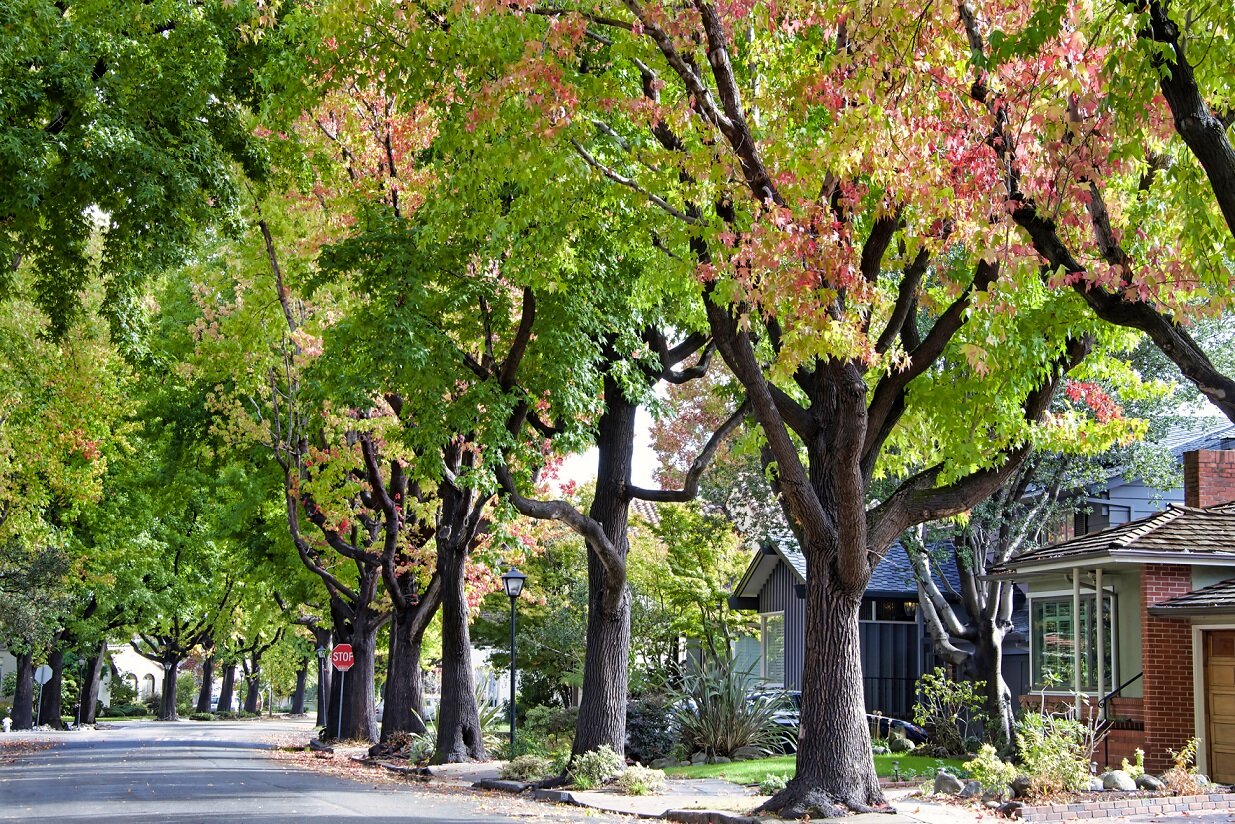Research shows that a green neighborhood can be surprisingly beneficial for your heart health. It may be well worth our time, effort, and money to make residential areas greener.
Image Credit: Sheila Fitzgerald via Shutterstock / HDR tune by Universal-Sci
Many things can be beneficial for your heart health, such as eating healthy, sleeping better, taking frequent baths, and getting regular physical exercise.
Scientists at the European Society of Cardiology added another item to that list, presenting research that suggests that living in a green neighborhood is advantageous for heart health. It turns out that people who live in relatively green neighborhoods are less prone to develop cardiovascular disease.
Dr. William Aitken, one of the study's authors, explained that greater levels of vegetation in neighborhoods are linked to reduced incidence of heart disease and stroke over time, both when the degree of greenness remained constant and when it rose.
According to Aitken, it was surprising that these associations emerged in a time span of only five years, which is a rather short period for a beneficial environmental impact.
Determining whether vegetation has any effect on heart disease rates
Making streets and neighborhoods more green has several advantages; with this study, scientists examined whether it had any effect on heart disease rates. The researchers also looked at whether increasing the number of plants in a given area would result in a reduction in heart disease over time.
The researchers looked at almost 250.000 senior citizens aged 65 or older who resided in the same Miami area between 2011 and 2016.
The number of new cardiovascular diseases such as heart attack, atrial fibrillation, heart failure, ischemic heart disease, hypertension, and stroke/transient ischaemic attack was determined using Medicare data.
How did researchers ascertain the greenness of a city block?
To determine the greenness of different city blocks, the scientists used satellite images. The quantity of visible and near-infrared sunlight reflected from the Earth's surface gave hints as to how green an area was as chlorophyll from plants commonly absorbs visible light and reflects near-infrared light, so measuring both indicates the amount of vegetation. City blocks were then categorized as low, medium, or high in terms of their vegetation.
Image Credit: Goncharovaia via Shutterstock / HDR tune by Universal-Sci
Starting in 2011, participants were divided into three groups based on whether they resided in low, medium, or highly vegetated blocks. In 2016, this was done a second time to determine any differences. (During that time, Miami-Dade County Parks ran tree-planting programs; thus, someone living in a low-greenness block in 2011 may live in a high-greenness block in 2016.)
The researchers calculated the chances of getting any new cardiovascular illness and the number of new cardiovascular diseases based on block-level greenness. Age, gender, race/ethnicity, the number of baseline cardiovascular problems, and neighborhood variables such as median family income and walkability were all taken into account as well.
Results
During the five-year period, the researchers first examined heart health among people who lived in regions with a high amount of vegetation vs. regions with a low amount on a consistent basis.
Throughout the research, residents of high greenness blocks had a 16 percent reduced risk of acquiring any new cardiovascular diseases compared to those in low greenness blocks.
Participants in high greenness regions had 4 percent fewer new illnesses than those in low greenness blocks among those who had a cardiovascular ailment during follow-up.
Subsequently, the researchers compared the heart health of people whose neighborhoods got greener compared to those who remained to live in low-vegetation regions. When compared to inhabitants of low greenness regions throughout the research, individuals who moved from low greenness in 2011 to high greenness in 2016 had a 15% reduced risk of acquiring new cardiovascular problems.
Among individuals who developed a cardiovascular ailment throughout the trial, those whose neighborhoods got greener had 9 percent fewer new cardiovascular problems in comparison to inhabitants of neighborhoods that remained consistently low in greenness during the research period
Image Credit: Roschetzky Photography via Shutterstock / HDR tune by Universal-Sci
So why is living in a neighborhood with more vegetation better for your heart?
The researchers think that their observations are the result of a combination of circumstances. Individuals who live in regions with more greenery, for example, may engage in more outdoor activity and may feel less stressed as a result of being surrounded by nature. Furthermore, vegetation may offer some natural shelter from noise and air pollution.
According to Dr. Aitken, tree planting and greening of neighborhoods is connected with several advantages and is a very low-cost investment that can improve health and well-being in a variety of situations.
"For the cost of one emergency room visit for a heart attack, trees could be planted in a neighborhood with 100 residents and potentially prevent ten heart diseases in this group."
All in all, It may be well worth our time and money to make residential neighborhoods greener. Let your local government know!
Sources and further reading:
Taking a bath every day reduces the risk of a heart disease related death (Universal-Sci)
How climbing four flights of stairs can help in assessing your heart health (Universal-Sci)
The Relationship of Neighborhood Greenness to Stroke/ Transient Ischemic Attack in 249,405 US Medicare Beneficiaries (ResearchGate)
Being active increases heart attack survival by up to 45% (Universal-Sci)
If you enjoy our selection of content, consider subscribing to our newsletter (Universal-Sci Weekly)
Featured articles in Health, Mind & Brain:












